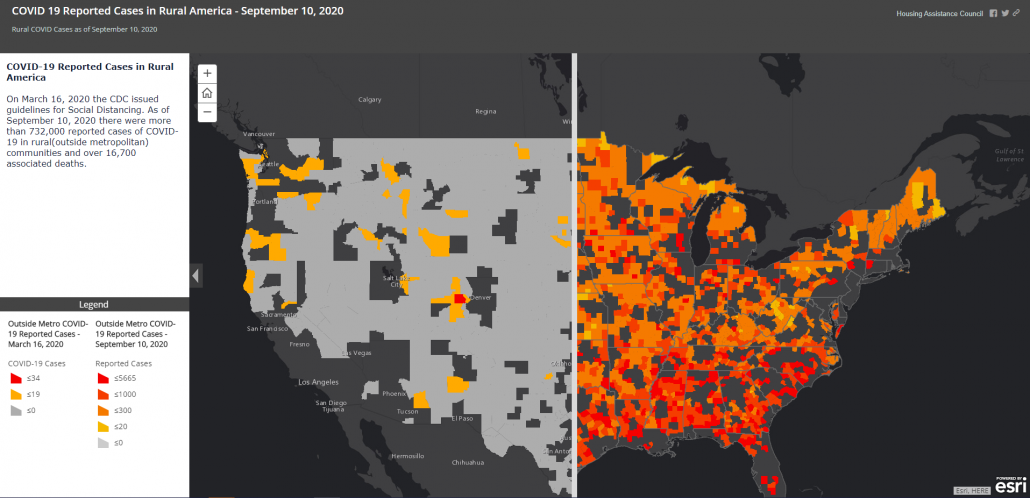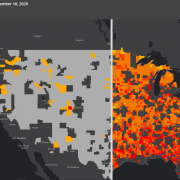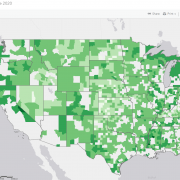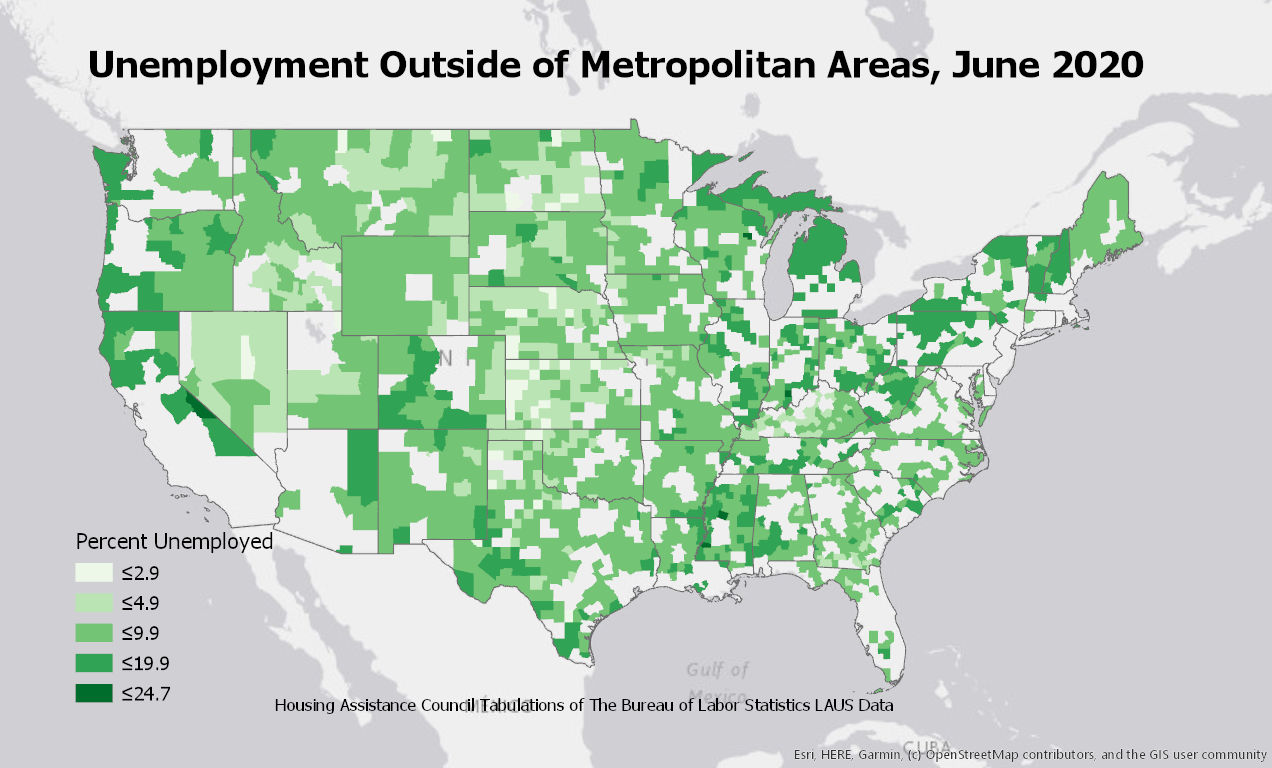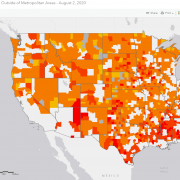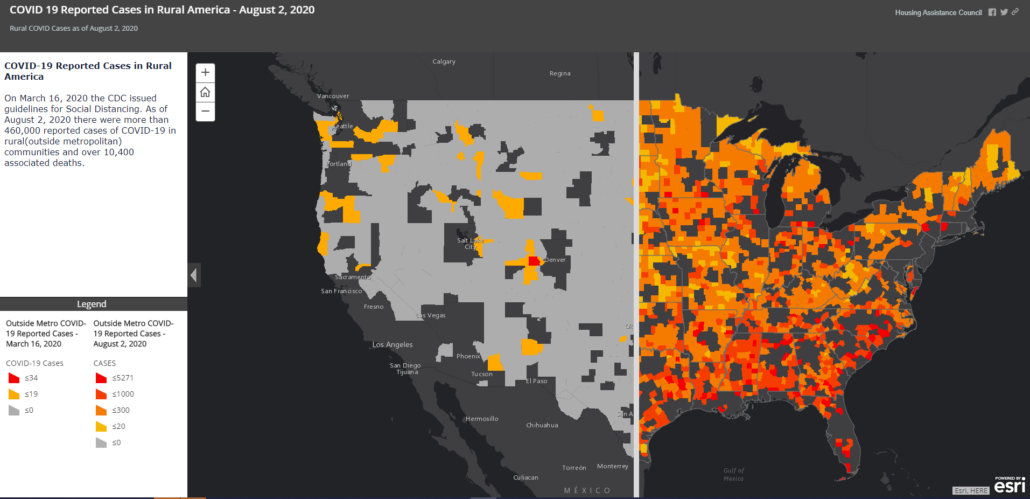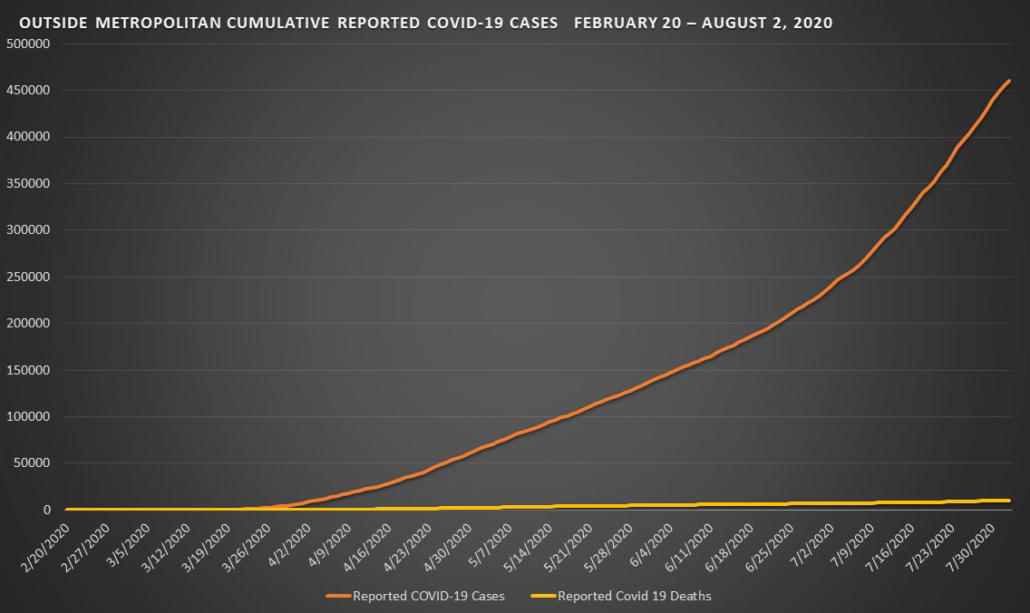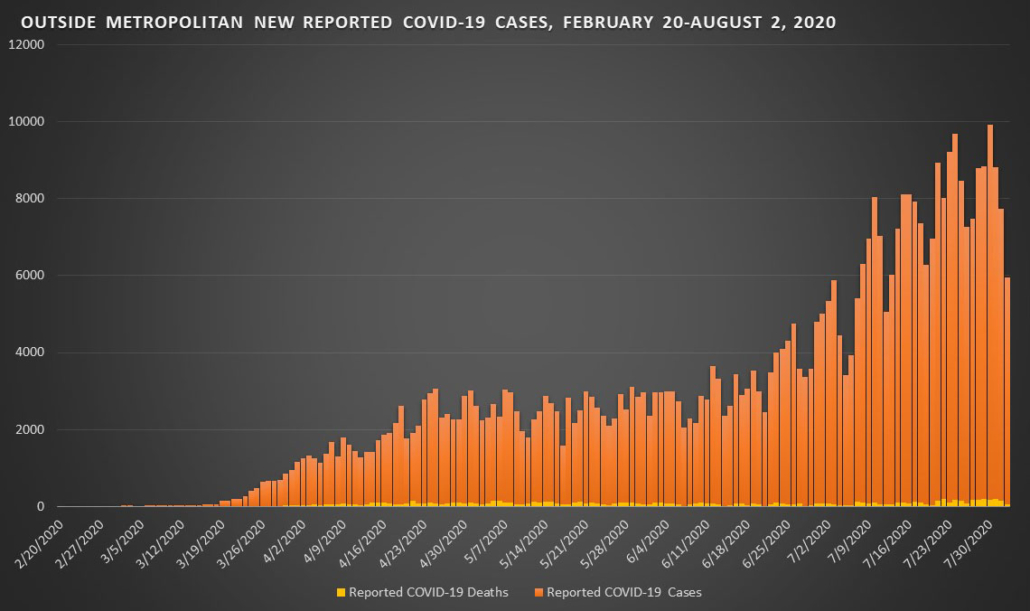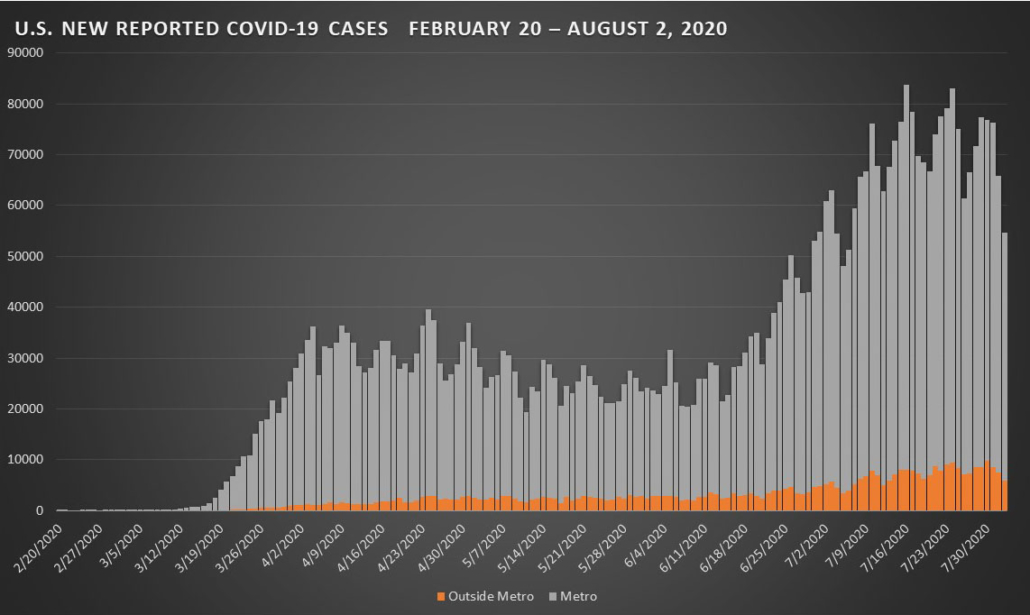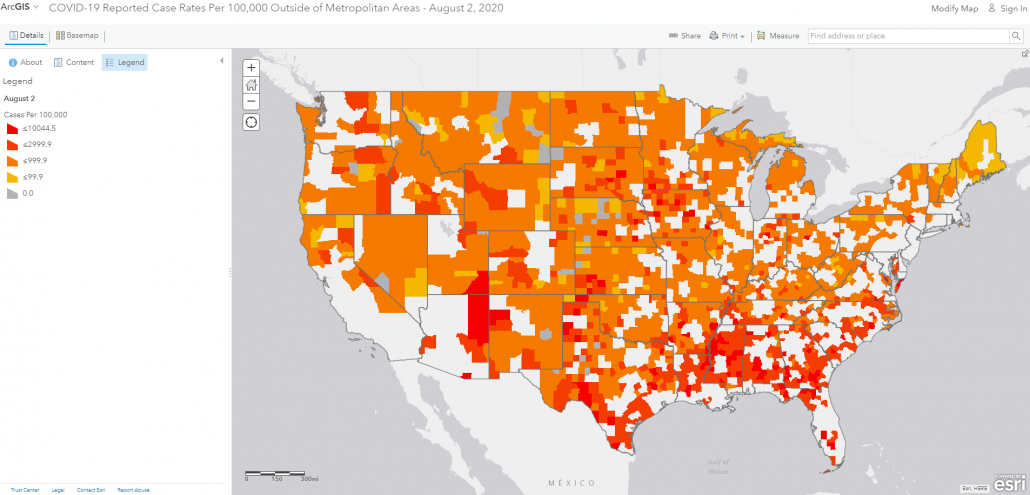The Coronavirus Aid, Relief, and Economic Security (CARES) Act, signed into law on March 27, 2020, provides assistance for small businesses (including rural housing and arts organizations). HAC has compiled details and resources on this page.
Check out all of HAC’s coronavirus resource pages here.
On this page:
CARES Act Information
UnidosUS CARES: Explaining Covid-19 Relief for Latino Families, UnidosUS (videos in English and Spanish)
Coronavirus Relief Options, Small Business Administration
Loans Available for Nonprofits in the CARES Act, National Council of Nonprofits, April 5, 2020
The Small Business Owner’s Guide to the CARES Act, Senate Small Business Committee
Small Business Provisions in the CARES Act, Senate Small Business Committee, Minority (Democratic)
What the Families First Coronavirus Protection Act Means to Nonprofits, National Council of Nonprofits, March 2020 (this Act preceded the CARES Act and was signed into law on March 19, 2020)
Find a State Association of Nonprofits through this page
Interim Guidance for Administrators and Leaders of Community- and Faith-Based Organizations to Plan, Prepare and Respond to Coronavirus Diseas 2019, Centers for Disease Control
Pivoting to Remote Work – COVID-19 Response Course Track for Nonprofits, TechSoup (free online courses)
SBA Economic Injury Disaster Loans and Advances – for Agricultural Businesses
NEW HERE ON MAY 12: The Small Business Administration is currently accepting applications for Economic Injury Disaster Loans and Advances ONLY from agricultural businesses with 500 or fewer employees. EIDL loans can be used to pay fixed debts, payroll, accounts payable, and other bills that would have be paid had the pandemic not occurred. EIDL is not intended to offset lost sales or profits, or to pay for business expansion.
NEW HERE ON MAY 12: Stakeholder Announcement: USDA Leadership … Update Stakeholders on Accessing SBA Relief Programs, April 24, 2020
Funding Resources Not Related to the CARES Act
NEW HERE ON MAY 12: Covid Grants Program for organizations in Arkansas, $5,000-$150,000, no application deadline, Blue & You Foundation
NEW HERE ON MAY 12: Emergency loans and grants for organizations affected by COVID-19, Open Road Alliance. “We will prioritize organizations and activities that have a clear and direct role in ‘flattening the curve’ and thus limiting, shortening, or minimizing the economic and social, as well as health effects of the pandemic.”
NEW HERE ON MAY 12: Grants for organizations working in Central Appalachia, up to $3,000, deadline May 31, Appalachian Community Fund
NEW HERE ON MAY 12: Support for organizations working in Texas, Reliant Gives
NEW HERE ON MAY 12: Foundation Requests for Proposals for Covid-19 Relief, Chronicle of Philanthropy, May 12, 2020
Updated Daily: Help for Nonprofits During the Coronavirus and Uncertain Economic Times, Chronicle of Philanthropy
FindHelp.org (“Find food assistance, help paying bills, and other free or reduced cost programs, including new programs for the COVID-19 pandemic”)
Funding for Coronavirus (COVID-19) [for nonprofits], Candid, undated but updated regularly
Williams Foundation for organizations in these states, March 27, 2020
HIP COVID-19 Rapid Response Migration Fund, Hispanics in Philanthropy, March 18, 2020
Coronavirus Rapid Response Funds, Chronicle of Philanthropy, March 12, 2020
Planning for Ongoing Changes
Review Policies and Procedures
- Review your organization’s policies related to illness and sick leave to ensure your policies and practices are consistent with public health recommendations and are consistent with existing state and federal workplace laws.
- Develop a plan for communicating with your employees in a rapidly changing environment. Identify how will you communicate with employees if changes are required.
- Evaluate how staff can work from home. This will require you to consider the aspects of each role that can be completed remotely, access to technology, and access to broadband.
- Establish a short-term plan to increase staff effectiveness within one week. If needed, draft a 15-day plan to coordinate resources, tools, and technology to increase the effectiveness of as many staff as possible.
- If you have essential workers or your organization is still operating in public settings, make it easy for people to practice good hygiene by providing tissues and no-touch disposal receptacles and placing alcohol-based hand rubs in multiple places in common spaces.
- See the CDC’s Interim Guidance for Businesses and Employers to Plan and Respond to Coronavirus Disease for recommendations and considerations for creating an infectious disease outbreak response plan.
How to Adapt Your Nonprofit’s Sick-Leave Policy During Covid-19, Lisa Schohl, The Chronicle of Philanthropy, March 30, 2020
How Charities Can Make Working From Home Work for Everyone, Scott Westcott, The Chronicle of Philanthropy, April 21, 2013
Pivoting to Remote Work – COVID 19 Response Course Track for Nonprofits, TechSoup (free online courses)
Review Your Organization’s Finances
- Understand your financial position in terms of net assets and liquidity.
- Identify implications on revenue and expenses.
- Manage your cash flow.
From Sustainability to Survivability: How Nonprofits Can Manage Uncertainty Amid Crisis, Steve Zimmerman, Spectrum Nonprofit Services, undated
Financial Leadership in the Face of Impossible Choices, Curtis Klotz, Innovation in Nonprofit Finance Blog, March 18, 2020
Continuity and Recovery Planning
A business continuity plan is a written document outlining how a business will operate during an emergency.
Business Continuity and Disaster Recovery Plan Template, Nonprofit New York
Nonprofit Disaster Planning and Recovery, TechSoup
Crisis Management Essentials, Nonprofit Risk Management Center
The Future is Now: Preparing for the Unknown Crisis, Nonprofit Risk Management Center
Managing Grants and Fundraising
Do you have grants that are tied to deliverables? Government contracts to provide services? Assess your organization’s capacity to meet deliverables over the next 30, 60, and 90 days. Communicate with funds and government contacts to inform them how your work is impacted.
How Nonprofits Should Approach Fundraising and Donor Communications during the Coronavirus Pandemic and Financial Crisis, nonprofitPR.org
10 Things Fundraisers Can Do From Home During the COVID-19 Pandemic, Adam Ruble, sgEngage, March 17, 2020
Board Member Responsibilities
What Nonprofit Board Members Should Be Doing Right Now to Address the COVID-19 Situation, Joy Folkedahl and Lindsay Tallman, BoardSource, March 16, 2020
Nonprofit Governance: Coronavirus and COVID-19, Gene Takagi, NEO Law Group, March 11, 2020
Participate in Public Decision-Making
Participate in the process at all levels of government and with funders to share the needs of your clients and the communities you serve. Things are too chaotic to wait for an invitation. Inform yourself, request to be heard, and be a part of the process.
The Paycheck Protection Program (Emergency SBA 7(a) Loans)
Small Business Administration PPP site
Applications are accepted by SBA-approved lenders. Most entities report that time is of the essence because funds are expected to be oversubscribed.
- Most statewide nonprofit associations are putting out information and providing email updates. Hopefully these statewide organizations will also track which lenders are making loans for each state, region. Here are two such resource guides for Virginia (where some of the following information comes from) and Georgia.
- This is the best and simplest resource for quickly comparing and learning the basics of CARES Act loan options for nonprofits, including the Paycheck Protection Program.
- The US Chamber of Commerce created the easy to understand Coronavirus Emergency Loans resource guide addressing eligibility, loan forgivability parameters, and the information required to apply.
- It appears that all lenders will use the same SBA Paycheck Protection Program Loan template. It will help local nonprofits clearly understand what they need in order to apply.
